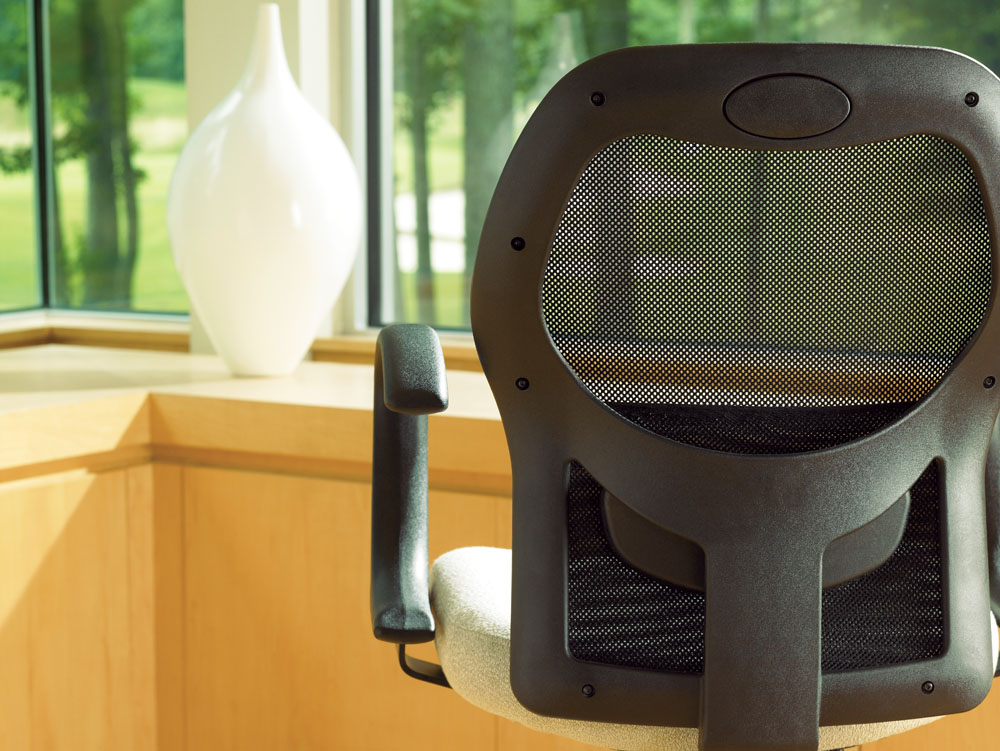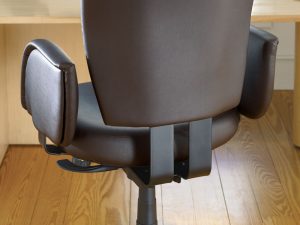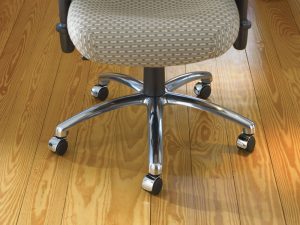Lot of folks think that an ergonomic chair is some specific type or style or brand of office seat that will relieve back or neck or hip pain.
In fact, any office, computer or task chair that has been selected to match the needs of the human body, with the goal of improving safety, comfort and productivity, is ergonomic. A good ergonomic chair supports your body so that you can perform your best work in comfort. The chair that you already use may be improved with a pad or a pillow or a footrest. If you do decide to invest in an ergonomic chair for yourself, before you narrow down your search to a particular model or brand of office chair, think about how your body is built, pay attention to what you do while you are seated and make a few notes about what office chair features might be worth something to YOU.

Many times the functionality of the chair is what adds the dollars to the price tag. The best ergonomic chair for you isn’t necessarily the one with the most function. Here are some things to consider when you’re thinking about what would be the best office chair for you.
Basic Ergonomics Checklist
- Your space – is you desk tall, short, in a very tight space, etc…this is also where you would consider the “feel” of your office space – do you want it to be contemporary, traditional, somewhere in between?
- Yourself – do you need the best computer chair for long hours, or do you need a chair that will support work for an hour or so at a time. Does your surface allow you to get arms (do they fit underneath), do you even require arms? How do you work – Do you spend most of your time leaned back on the phone, bent forward typing furiously, a combination of the two? This is the biggest factor for determining what level of functionality is necessary. Make sure to look at what the chair you’re buying “does”. For most comfort, look for a knee tilt with synchro movement (meaning the seat and back move together). Many users like the feel of a “weight activated” control – this features the knee tilt and synchro movement, and requires less adjustment.
- Textile (yes, this still applies to ergonomics) –Do you prefer to sit on vinyl or fabric? Are you likely to spill on your chair? What properties are you looking for – cleanability, anti-microbial finish, a certain look, color, or feel? It’s important to have a look and feel of the textile you’re choosing for your chair – a textile that looks a certain way online might not be at all what you’re expecting – and the textile can really impact the comfort of your chair! So get a sample swatch of the textile if you can.
- Dimensions – make sure you look at the size of the chair – this can usually be found on any product page and should talk about: overall dimensions (this would be the entire size of the chair), seat dimensions (seat width, depth, and height range), and back dimensions (height and width). If you’re a wider or smaller user, this is especially important. Overall dimensions are sometimes wider than the seat dimension – it is the seat that you will be sitting in, so that is the important one! Check in the seat dimensions that the seat is deep enough for your leg – if not, consider adding an adjustable seat depth.
- Seat materials – what kind of foam are you looking for? Do you want a firmer, TLC memory foam seat, a closed cell foam seat that isn’t memory foam but provides great support with a little softer feel, or an open cell foam seat that feels soft to the sit, but may not provide so much support as the years go on?
- Lumbar support – what kind do you need? Every chair that is claiming to be “ergonomic” should talk about lumbar support. The lumbar of the chair should follow the curve of your back – this is why it’s extremely important that either the lumbar or the seat back of the chair is moveable. Lumbar should adjust to fit YOU – some lumbars have the ability to go up and down, as well as in and out. Some have the ability to move the right and left side individually.
- Arms – as alluded to above, you may not even need arms on your chair! Consider why you would need arms. Arms are generally used for resting your arms on. Be aware that if arms are not adjusted correctly, it may result in some of the following issues:
- Not being able to get close enough to your desk/computer – this can happen if your arms are too high.
- Stress in your neck and shoulders – this can happen if you are resting your arms on armrests that are too high.
- If your arms are too low, it won’t really cause any issues, but they also won’t be of much use.
Make sure to check the height of your desk and the height range of the arms. If you think you need arms, consider what you will use them for and ensure they will fit under your desk.
- Headrest – this is generally a matter of preference. Some chairs come with a head rest and some don’t. Traditionally, “the boss” has a head rest, as their job was to talk on the phone, so they spent a lot of time leaning back and chatting. Now that has become outdated, and headrests are seen less often. But they may still provide the extra support you need if you feel a headrest is for you.
- Casters – these little wheels that make your chair mobile are SO important. Will your chair be on a carpet or a hard floor? Carpet casters will roll too quickly on a hard floor and may damage your flooring. Hard floor casters may not move the way you’d like them to on a carpet. Choose the casters that are made for your flooring type.
Wherever you choose to buy your chair from, you must consider how it will fit you. How the chair fits you and your environment is what makes that chair ergonomic. So before you go out and google what the best ergonomic chair is, make sure you consider what would make anything ergonomic for you!













